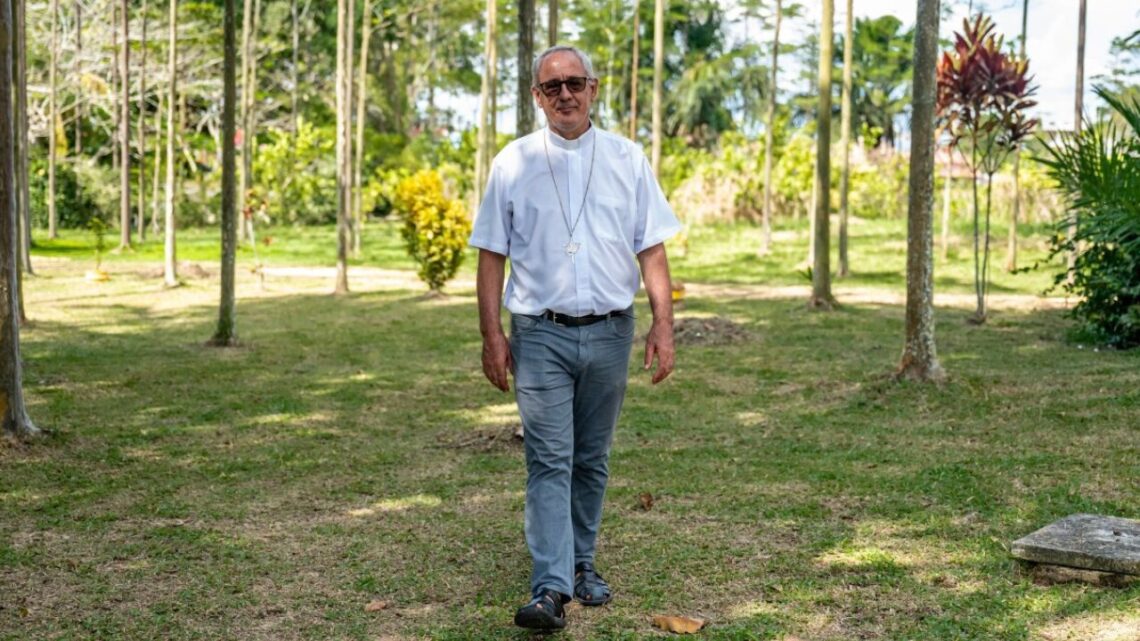Gold has always been a symbol of wealth and beauty. But behind its shine, there’s a dark side—mercury pollution. In Peru, this growing problem is now putting rivers, wildlife, and local communities at serious risk.
A Catholic bishop has raised concerns that the rising demand for gold is destroying both nature and human lives.
How Gold Mining Impacts Peru’s Rivers
Gold mining, especially illegal small-scale mining, has been expanding rapidly in Peru’s Amazon region. Miners often use mercury to separate gold from other materials. While this method is cheap, it’s extremely harmful to the environment.
When mercury is dumped into rivers, it poisons the water and fish. People who eat these fish can suffer from serious health problems, including brain and nerve damage. Over time, this pollution spreads far beyond the mining zones, affecting entire ecosystems.
Main Effects of Mercury Pollution
| Impact Area | Description |
|---|---|
| Rivers & Water | Mercury contaminates rivers, making water unsafe for drinking and fishing. |
| Fish & Wildlife | Poisoned fish harm animals and people who rely on them for food. |
| Human Health | Mercury exposure can cause nerve, brain, and organ damage. |
| Communities | Indigenous groups lose clean water and safe food sources. |
Church Leaders Raise Their Voice
Bishop Alfredo Vizcarra of Peru’s Amazon region has spoken out against the destruction caused by gold mining. He warned that greed for gold is costing Peru its natural treasures.
The bishop also called for stronger government action and international cooperation to stop mercury trafficking and illegal mining.
He emphasized that protecting the Amazon rivers is essential not only for local communities but also for the global environment. These rivers play a key role in controlling the Earth’s climate and supporting biodiversity.
Why Mercury Pollution Is Hard to Stop
Stopping mercury pollution is difficult because illegal miners often work in remote forests, far from government control. Many people turn to gold mining because of poverty, seeing it as their only source of income.
The government has tried several programs to formalize small-scale miners and promote cleaner technologies, but progress is slow. Smugglers still bring mercury from neighboring countries, making the problem worse.
Global Demand and the Hidden Cost of Gold
The rising global demand for gold jewelry and electronics is one of the main reasons this issue continues. As prices rise, more people start mining illegally. Unfortunately, the true cost of gold isn’t just financial—it’s environmental and human.
When people buy gold, few realize that it may have come from areas where forests are destroyed, rivers poisoned, and communities displaced. Experts and environmental groups are urging consumers to buy ethically sourced gold and support responsible mining practices.
What Can Be Done to Protect Peru’s Rivers
Experts suggest several steps to reduce mercury pollution:
- Ban illegal mercury imports and improve border controls.
- Promote cleaner gold extraction technologies like gravity separation.
- Support education and alternative jobs for miners.
- Encourage responsible gold certification so buyers can choose eco-friendly products.
- Increase international cooperation to protect the Amazon basin.
Peru’s rivers are among the most beautiful and important in the world. But the rising demand for gold threatens to destroy them through mercury pollution and illegal mining.
Without stronger action from both local authorities and the global community, this crisis could leave a permanent scar on nature and human health. Saving Peru’s rivers today means saving life itself for the future.









